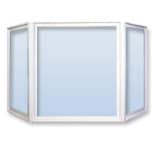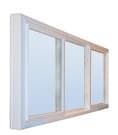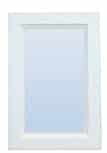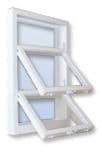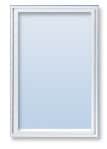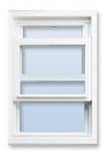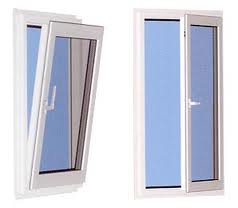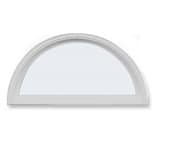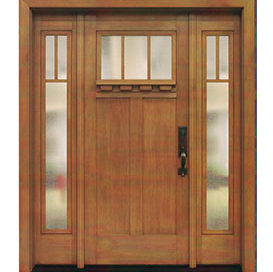How to Choose the Appropriate Standard Window Sizes Along with Door Sizes?
When to think about standard windows sizes? Living in a home for more than 20 years means that it’s now the time to look at the conditions of current windows and doors.
Owners have to hire the professionals to inspect their property in order to find out if things are satisfactory or there is a need to get them replaced to avoid potential problems.
Here, what most of the homeowners overlook is the appropriate window sizes, door dimensions and their types that may work well for the rest of the property. The next worth considering part of planning for the replacement project is to focus on customization.
Yes, every component allows homeowners to make changes in the way they want. The approach should be to understand how things have to be done.
So, once it has been decided that the home needs to have new windows and doors, the next step is to figure out how different parts come together to make highly efficient windows and doors.
Here, homeowners should remember that the success of the replacement project depends on their understanding about the window industry terminology. Since every manufacturer produces different types of windows and doors Toronto, the basic knowledge is the key to deciding on how to maximize the benefits of even a small replacement project.
Whether it’s the casing, jamb extensions, brickmoulds or frame profiles, every part holds some significance that no one could overlook or ignore. To have more insight, experts have explained everything in detail. Homeowners only have to read and analyze the info as per the requirements of their homes.
Standard Window Profiles in Canada
Whether it’s about installing new windows in the entire property or just replacing a few units, frame profiles always remain the crucial factor that dictates how things should be done. As a matter of fact, every window profile is different from the other, and the decision to select one profile depends on the property’s demand. I.e. some homes need high profile windows while others require low profile units.
As far as the profile status, with respect to the window type, slider hung, and end-vent windows are famous for having low profile frames. Casement and awning windows usually have high profile frames. But, what if the home needs both profiles in the same windows? Picture windows turn out to be the perfect option available in this regard.
If homeowners want to install new units beside the current ones, the following information would be the most useful part of the process. Experts always suggest considering the frame profile and search for the closest match so that everything could be done as it is expected. Another significant fact is that the window profile predetermines the amount of light coming into the home.
Since high profile frames have the low surface area, they do not allow an ample amount of light to pass through, while low profile windows always maximize brightness.
To make this fact more authentic, here is the numeric evidence:
| Dimensions (In) | Low Profile Glazing Dimension (1.5in frame) | High Profile Glazing Dimension (3in frame) | Surface Area Low vs. High (In2) | Percentage Difference |
| 24 x 12 | 21 x 91/8 | 181/16 x 61/16 | 191.63 vs. 111.76 | 71% |
| 24 x 24 | 21 x 211/8 | 181/16 x 181/16 | 443.63 vs. 328.51 | 35% |
| 24 x 48 | 21 x 451/8 | 181/16 x 421/16 | 947.63 vs. 762.01 | 24% |
| 48 x 48 | 45 x 451/8 | 421/16 x 421/16 | 2030.63 vs. 1774.51 | 14% |
| 72 x 48 | 69 x 451/8 | 661/16 x 421/16 | 3113.63 vs. 2787.01 | 12% |
Brickmould, Casing and Jamb Extensions
As mentioned earlier, there are different profiles for all window types and homeowners have to analyze closely in order to come up with the most efficient one. Apart from being concerned about standard window sizes Canada, homeowners also have to realize the importance of the trim or casing that is present around the windows.
Standard sizes usually have a 3 3/8-inch or 2 5/8-inch vinyl casing, but it’s not necessary to consider the same all the time. Homeowners can go for any other option as per the type of a brickmould added. If someone doesn’t know what a brickmould is, it’s high time to get some basic knowledge – it is the seal present in-between the frame and wall to prevent outside elements like air and moisture from entering the rooms. When it comes to removing the existing windows, the brickmould size has to be adjusted to the dimensions of the existing windows.
Jamb extensions are another worth considering part of the windows. They basically work as a frame to fill the gap in the wall at the inner side of the window frame. Its primary purpose is to give that perfect edge and support to the casing. The best part of jamb extensions is that they are available in various sizes, according to the width of custom-made windows. As for the window dimensions, there may be variations with respect to the type.
Nowadays, Direct Pro Windows and Doors suggests installing triple pane windows because of their versatility and durability. But, homeowners should remember that they are smaller as compared to double pane windows. The approach should be to look at the standard window sizes every time before selecting a certain type.
Minimum and Maximum Window Sizes in Canada
While researching on the standard window sizes Canada, homeowners usually come to know that it makes no sense to work with two maximums, meaning that there should always be a combination that could yield the desired outcomes.
Here, the rule of thumb is always to ensure that the maximum dimension always lies within the given parameters so that nothing could go wrong in any way.
Here is the table to explain how the selection should be made:
| Type | Width (Max in Inches) | Height (Max in Inches) | Area (Max in Sqft) |
| Single slider – double pane | 78 | 54 | 24 |
| Single slider – triple pane | 78 | 54 | 24 |
| Double slider – double pane | 78 | 54 | 24 |
| Double slider – triple pane | 72 | 48 | 21.66 |
| Single hung – double pane | 49 | 80 | 24 |
| Single hung – triple pane | 45 | 78 | 21.66 |
| Double hung – double pane | 49 | 78 | 24 |
| Double hung – triple pane | 48 | 68 | 21.66 |
| Casement – double pane | 38 | 78 | 18.5 |
| Casement – triple pane | 36 | 78 | 16.05 |
| Awning – double pane | 48 | 60 | 24 |
| Awning – triple pane | 50 | 50 | 17.36 |
Minimum and Maximum Legal Window Sizes in Canada
Living in Canada means that homeowners have to follow certain rules and regulations while constructing or renovating their homes. Whether it’s about installing new windows or working with the existing ones, there are some legal aspects that always need attention.
Below you can see the table that describes the legal standard window sizes prevailing in the country:
| Type | Width (Max in Inches) | Height (Max in Inches) | Area (Max, Sqft) |
| Awning – double | 48 | 50 | 24 |
| Awning – triple | 50 | 50 | 17.36 |
| Double Slider – double | 78 | 54 | 24 |
| Double Slider – triple | 72 | 48 | 21.66 |
| Single Slider – double | 78 | 24 | 54 |
| Single Slider – triple | 78 | 24 | 54 |
| Single Hung – double | 49 | 80 | 24 |
| Single Hung – triple | 45 | 78 | 21.66 |
| Double Hung – double | 49 | 78 | 24 |
| Double Hung – triple | 48 | 68 | 21.66 |
| Casement – double | 38 | 78 | 18.5 |
| Casement – triple | 36 | 78 | 16.05 |
Standard Doors Sizes
Exterior Doors Sizes
Now that everything has been explained about standard window sizes, it’s time to step ahead and look at the standard door size Canada. Exterior doors are usually the focal point for any property and, therefore, their selection should be based on a certain criterion as indicated by Direct Pro Windows and Doors. Our experts always point out that the standard dimensions must be 6ft and 8in by 3ft and 96in.
Sliding Glass Doors
One of the important reasons to choose sliding doors is their ability to allow access to maximum light. They minimize the energy consumption and thus allow homeowners to see a significant reduction in their utility bills. They are also easy to move and convenient to use.
Interior Doors
As for interior doors, their height must be 80-inch while the width can be either 24, 28, 30, 32 or 36-inch. Their thickness must be 1 3/8-inch.
FAQ
1. What are the standard window size in Ontario?
The standard window sizes in Ontario, Canada can vary depending on the type and purpose of the window.
Here are some common standard window sizes used in residential construction in Ontario.
- Single Hung Windows: These windows typically have a width range of 2 feet to 3 feet (24 to 36 inches) and a height range of 4 feet to 6 feet (48 to 72 inches).
- Double Hung Windows: These windows are similar to single hung windows but have two operable sashes. The width range is usually between 2 feet and 4 feet (24 to 48 inches), and the height range is typically between 4 feet and 6 feet (48 to 72 inches).
- Sliding Windows: Sliding windows often come in larger sizes. The width range can vary from 3 feet to 8 feet (36 to 96 inches), and the height range is typically between 3 feet and 6 feet (36 to 72 inches).
- Casement Windows: Casement windows are hinged on one side and swing outward. The width range is usually between 1.5 feet and 3 feet (18 to 36 inches), and the height range is typically between 2.5 feet and 6 feet (30 to 72 inches).
It’s important to note that these measurements are general guidelines and may vary based on the manufacturer, style, and specific requirements of the project. For precise measurements and to ensure proper installation, consult with Direct Window Doors teams.
2. What is the standard bedroom window size?
A common standard size for a bedroom window is typically around 3 feet by 4 feet (36 inches by 48 inches) or larger.
It is important to note that the standard bedroom window dimensions can vary depending on factors such as building codes, architectural design, regional regulations and personal preferences, height of the room, the amount of natural light desired, and any specific building or safety codes in place.
For accurate measurements and to ensure compliance with local regulations, Consult with Direct Pro Windows Teams to assess the specific needs of your bedroom and provide appropriate window sizing recommendations.
3. What is the standard size for basement windows?
The standard size for a basement window is typically around 2 feet by 2 feet (24 inches by 24 inches) or 2 feet by 3 feet (24 inches by 36 inches).
The standard size for basement windows can vary depending on local building codes and the specific requirements of the basement. However, there are some common sizes that are often used for basement windows.
Additionally, the size of basement windows can also be influenced by factors such as the height of the basement walls, the purpose of the basement space, and personal preferences.
Contact Direct Pro Windows teams at 1-888-636-3350 to get your exact basement window size.
4. What is the standard size for garage windows?
Common standard sizes for garage windows are:
- Single Hung or Double Hung Windows: These windows are commonly used in garages and typically have smaller dimensions. The width range is typically between 1.5 feet and 3 feet (18 to 36 inches), and the height range is usually between 1.5 feet and 2.5 feet (18 to 30 inches). These sizes provide adequate light and ventilation while still ensuring security and privacy.
- Sliding Windows: Sliding windows are also a popular choice for garages. The width range for these windows is often between 2 feet and 4 feet (24 to 48 inches), and the height range is typically between 1.5 feet and 3 feet (18 to 36 inches).
- Fixed Windows: In some cases, fixed windows (windows that do not open) may be used in garages for simplicity and cost-effectiveness. The sizes of fixed windows can vary, but common dimensions range from 1.5 feet by 1.5 feet (18 inches by 18 inches) to 3 feet by 3 feet (36 inches by 36 inches).
The standard size for garage windows can vary depending on personal preferences, architectural design, and the specific requirements of the garage.
It’s important to consider the specific needs of your garage, such as natural light requirements, privacy concerns, and the overall design of the space, when determining the appropriate window size.
Additionally, local building codes and regulations may have specific requirements for garage windows, particularly if the garage is attached to the living space or used for habitable purposes. Consult with the Direct Pro Windows team to find the best window size for your garage.
Need Help to Select Perfect Windows & Doors sizes?
To get more information about the exact size for your home window and door contact Direct Pro Windows and Doors for 24/7 quick assistance. Just give us a call at 905-738-9959 or 1-888-636-3350 or fill out the form and see how our teams guide you about different types of window and door sizes that fit according to your place.

What Our Customers Say About Us
Fantastic company to deal with!! Eugene and his installation crew went over and beyond to provide excellent professional and efficient service. Most importantly Im thrilled with the high quality product they manufacture. Massive thanks and would highly recommend!
Timi
This company’s service made quite an impression on me. They are extremely dependable, and the prices for their high-quality windows are highly competitive. The windows were installed in a single day with no scratches or debris. I would strongly advise anyone looking to replace their windows with quality service to go with them.
Becky Salazar
Direct Pro replaced all our windows in house in just 2 days. Their salesman Eugene helped me to pick the windows which are just perfect for my needs. We were impressed by the noise reduction and energy efficiency of the new windows. Thank you so much.
Lisa Satya
I changed all my windows and front Door with this company, after a few delays in starting the work and also a few snags on completion, I am completely satisfied with their work, This could not have been possible if not for the exceptional service provider by Natalie, she was very courteous and her customer service is par excellent, she is a big reason I would recommend this company and their products is value for money, Thank you Natalie once again.
Chester
Excellent Service and great installation work. From the very beginning Paul was quick to reply and competitive with prices. The entire transaction from receiving a quote to completing the job was approximately 1 month. The quality of the windows are excellent and I’d highly recommend this company to anyone. Thank you again Paul for your prompt and wonderful service.
Marta Swiecki
We absolutely love our new windows and doors! It blows my mind how much larger, brighter, and newer my house looks and feels just by updating windows. From our initial free, no obligation quote through to installation, Direct Pro Windows and Doors was professional, responsive, helpful, and their experience and expertise was evident and appreciated.
Glenn
They were great in all respects. The salesman, Augi, was a great guy and very knowledgeable. Umut and his installation crew were professionals and fast. Our 14 windows were installed in one day and the difference they have made to our comfort in our home is extraordinary. We were dreading having to eventually upgrade our windows. We are so happy we finally decided to do them. We would call on Direct Pro again without hesitation.
Dora
Now this is a story all about how my life got twist turned upside down. With the windows and doors from direct pro – this is not the way I would go. Poor installation and Russian windows, this company is not legit and it shows.



